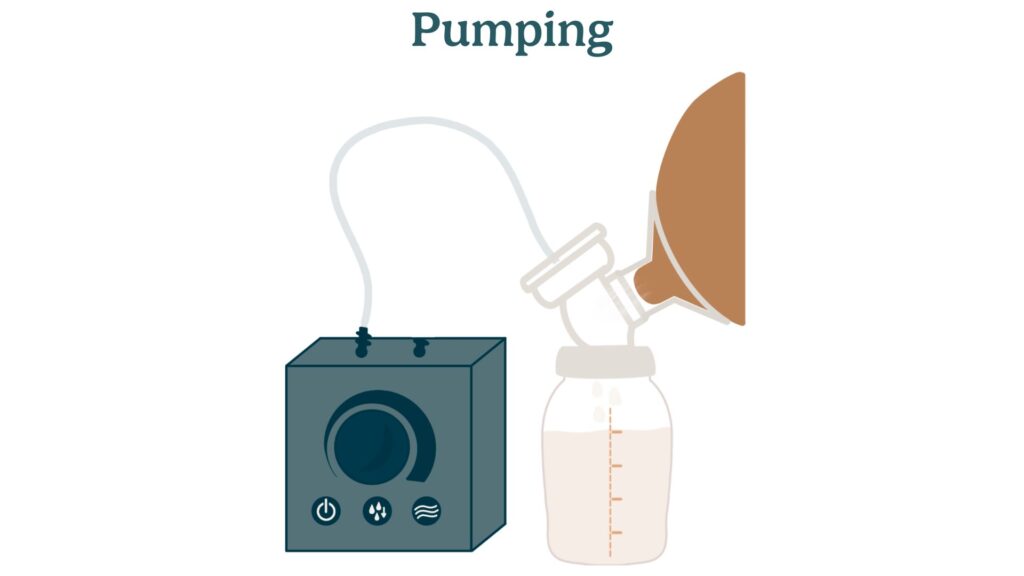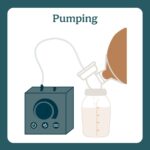pumping

Pumping
Pumping involves using a breast pump to extract milk from your breasts. This can be beneficial for various reasons, such as building a milk stash, returning to work, or managing breastfeeding challenges.
What to watch out for
It’s important to recognize how to use a breast pump correctly and manage pumping sessions. Here are some considerations and tips:
Benefits
- Flexibility: Pumping allows you to store breastmilk for future use, providing flexibility for feeding times and enabling others to help with feeding.
- Maintaining supply: Regular pumping can help maintain or increase your milk supply, especially if you are separated from your baby.
- Relief from engorgement: Pumping can relieve discomfort from engorged breasts and prevent blocked ducts or mastitis.
Potential Challenges
- Time-consuming: Pumping can be time-consuming and may require finding a suitable place and time to pump, especially if you are working or have other commitments.
- Milk supply concerns: Some mamas may worry about their milk supply if pumping does not yield as much milk as expected. Proper technique and schedule can help address this.
Tips for Managing Pumping
- Establish a schedule: Aim to pump at regular intervals, similar to your baby’s feeding schedule, to maintain your milk supply. Read more about creating a pumping schedule
- Use the right equipment: Ensure you have a good-quality breast pump and the correct flange size for your comfort and efficiency. Read more about using the right flange size
- Create a relaxing environment: Pump in a comfortable, relaxed setting to help encourage let-down and milk flow. Looking at pictures of your baby or listening to soothing music can help. Read more about getting into a let-down mindset
- Combine pumping with breastfeeding: Pumping immediately after breastfeeding or between feeding sessions can help increase your milk supply.
- Store milk properly: Use clean containers to store expressed milk and follow guidelines for refrigeration and freezing to ensure its safety and freshness. Read more about safe storage practices
Physical limitations or health circumstances
Certain conditions can influence the need for and approach to pumping:
- Returning to work: Many mamas choose to pump when returning to work to maintain their milk supply and provide breastmilk for their baby. Read more about breastfeeding and returning to work
- Low milk supply: Pumping can help increase milk supply if you have concerns about producing enough milk. Read more about increasing milk supply
- Premature birth: Pumping can provide breastmilk for a premature baby who may not yet be able to breastfeed effectively.
Other terms
Understanding related terms can help you better manage pumping and related practices:
- Let-down reflex: The release of milk from the breast triggered by your baby’s sucking or by pumping. Read more about let-down reflex
- Engorgement: Swelling and discomfort of the breasts due to milk accumulation, which can be relieved by pumping. Read more about managing engorgement
- Mastitis: An infection of the breast tissue that can cause pain, swelling, and flu-like symptoms. Prompt treatment and regular pumping can help prevent it. Read more about managing and preventing mastitis
- Milk storage guidelines: Recommendations for how to safely store expressed breastmilk in the refrigerator or freezer. Read more about safe storage practices
- Lactation consultant: A professional who can provide support and guidance on breastfeeding and pumping issues.


